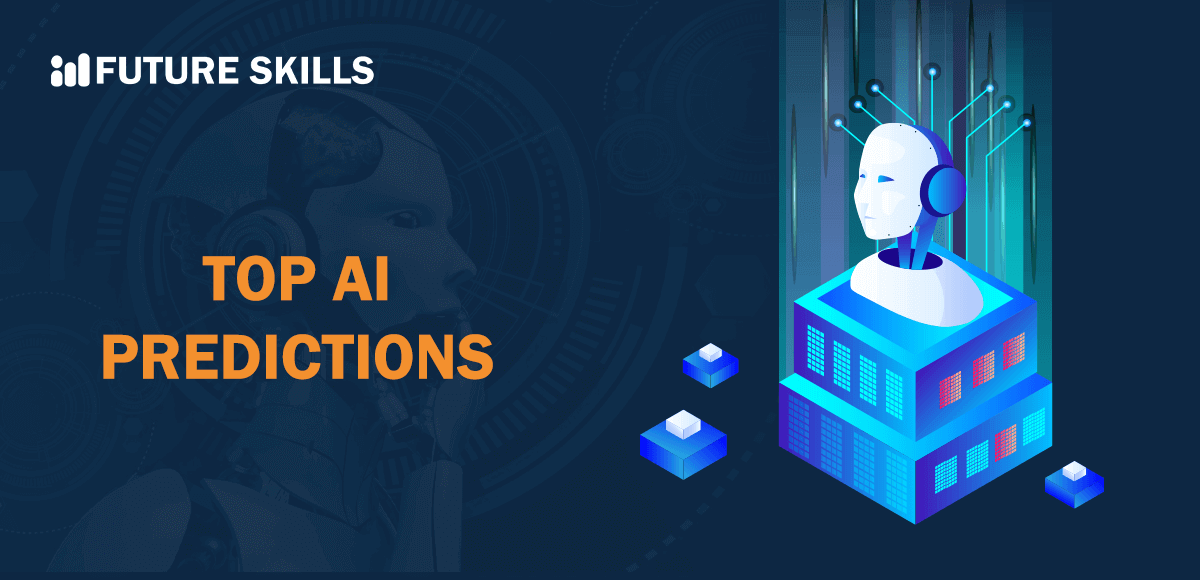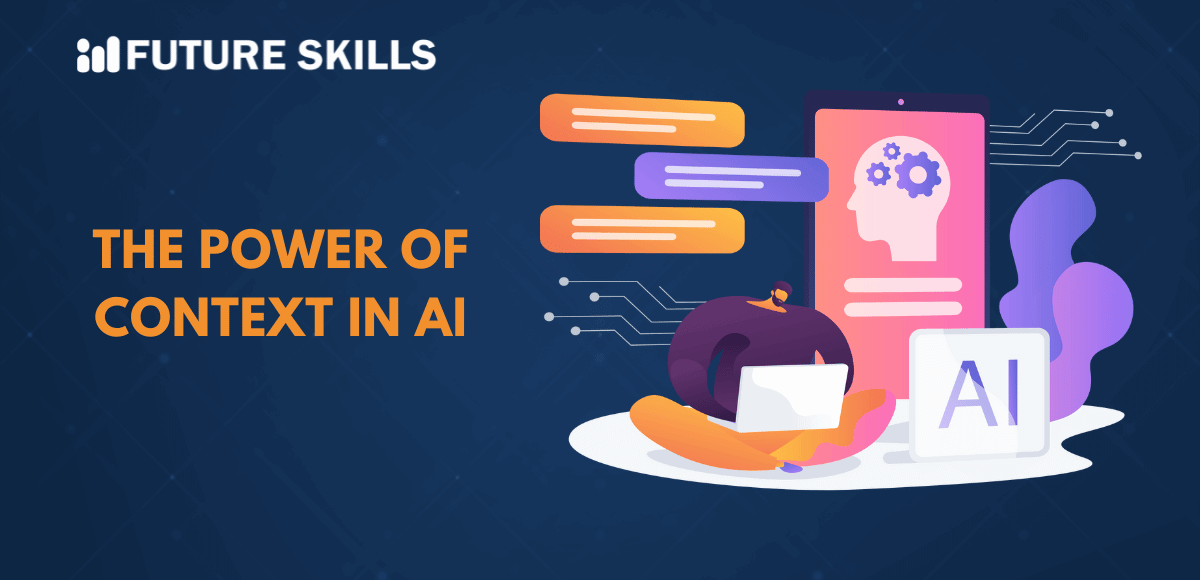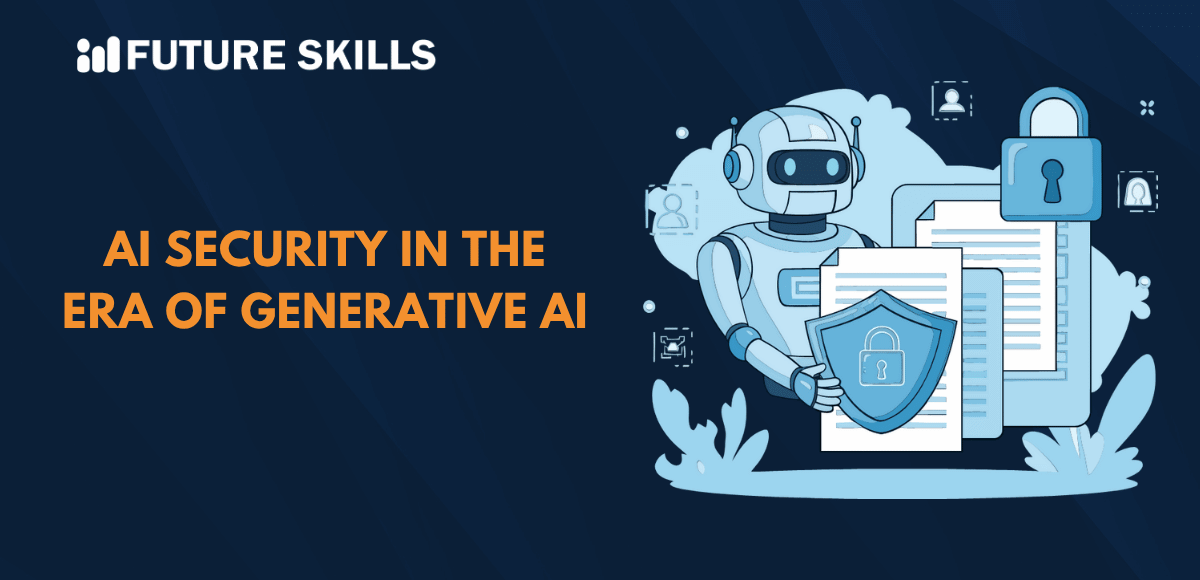The year 2023 brought the world closer to significant advancements in the domain of AI alongside fuelling ethical debates. You are not the only one who is curious about the best AI predictions for the next year, as AI has gained mainstream popularity.
AI chatbots such as Google Gemini and Bing Chat have showcased their mettle in natural language processing. On the other hand, generative AI models such as Midjourney V6 and DALL-E 3 have proved effective in creative image generation tasks.
As a matter of fact, generative AI has helped businesses achieve tangible results by improving productivity, stimulating creativity and fostering innovation. McKinsey & Company has predicted that generative AI applications can contribute almost $2.6 trillion to $4.4 trillion to the global economy every year through different business applications. Let us learn more about the top predictions for the future of AI.
Level up your AI skills and embark on a journey to build a successful career in AI with our Certified AI Professional (CAIP)™ program.
Unravelling Insights on the Existing State of AI
Artificial intelligence has been transforming the world, with businesses, governments, and individual users worldwide leveraging it for optimization and streamlining operations. The discussions about AI future predictions have gained momentum due to the impressive performance of AI solutions. Reports have stated that the global AI market could achieve a market capitalization of $308 billion by 2026.
It is also important to note that the adoption rate of AI can reach 60% by 2025. The highest adoption rates of AI would be visible in the domain of healthcare, manufacturing and financial services.
Another impressive detail about the existing state of the AI market draws attention towards the impact of AI on jobs. Interestingly, AI can generate almost 2.3 million jobs in the future, which will create a high demand for AI developers, machine learning engineers, and data scientists. The Word Economic Forum has stated that AI will create around 97 million new jobs by 2025.
You can also look at AI predictions for the future from the perspective of the adoption of AI-based solutions. For example, AI chatbots could build a market of $9.4 billion by 2024. The growing adoption of AI also means that AI expenses would also increase. For example, the retail industry would likely spend more than $20 billion on AI solutions by 2026.
Level up your ChatGPT skills and kickstart your journey towards superhuman capabilities with Free ChatGPT and AI Fundamental Course.
Predictions for the Future of AI
Artificial intelligence has led to major reforms and productive results for businesses in different industries. At the same time, artificial intelligence has also created concerns regarding the ethical and legal implications of using the technology. As innovation in the domain of AI gains momentum, the curiosity to find answers to “What is the famous prediction of AI?” has been increasing at a staggering pace.
Interestingly, experts have pointed out different themes that would have a profound impact on the future of artificial intelligence. While 2023 marked the rise of large language models or LLMs and generative AI models, 2024 might bring many other innovative developments.
Here is an overview of the most prominent trends that will dominate the field of artificial intelligence in 2024.
-
Open Source AI Models
One of the foremost predictions about the future of AI draws attention towards open-source AI models. Experts point out that open-source pre-trained AI models can gain significant popularity in 2024, thereby helping businesses improve growth. Businesses can leverage real-time or private data with these pre-trained models to achieve better productivity. The top AI predictions about open-source AI models suggest that they can also improve cost efficiency. IBM is one of the active contributors to the development of open-source AI models, which is evident in their collaboration with NASA.
The most noticeable contribution of IBM in open-source AI models points to the geospatial AI foundation model. It is the largest AI model on the Hugging Face platform and is a groundbreaking open-source AI foundation model. The model helps NASA expand access to earth science data for advancements in climate-related research and geospatial intelligence. The availability of the model on Hugging Face ensures democratization of access to the model and applications in earth science and climate change studies. The geospatial AI foundation model has proved effective for greenhouse gas detection and monitoring, deforestation tracking and crop yield prediction.
-
AI Becomes a National Priority
Another significant addition among the trends in the domain of AI for the future points to an emphasis on AI as a national priority. The review of AI future predictions sheds light on the possibilities of countries worldwide prioritizing AI development. The growing focus on artificial intelligence helps drive crucial advancements in the field of research and scientific and economic advancements.
Therefore, AI can serve as a strategic global asset for all countries in the future. The European Union has already claimed that it is committed to defining AI as a national priority through the EU AI Act. With the groundbreaking legislation, the EU provided the first comprehensive legal framework for AI.
The arrival of the EU AI Act denotes a major step in ensuring effective regulation of the deployment of AI systems in the EU. One of the interesting things about the legislation is that it encompasses different types of AI applications.
Most important of all, the EU AI Act presents restrictions on specific AI applications that can present unacceptable risks. For example, it prevents social scoring on the basis of personal traits or the use of emotion recognition in workplace environments.
-
The Hype for Generative AI Flattens
Generative AI would lose the hype it enjoyed in 2023. You can find a glimpse of such predictions in the graph of number of ChatGPT, which reached a plateau after May 2023. The best AI predictions for 2024 suggest that generative AI may give way to artificial general intelligence or AGI. The number of visitors to ChatGPT website has been decreasing. On the other hand, ChatGPT competitors such as Google Gemini have also reported similar results.
The declining hype around generative AI can also be attributed to the rise in negative sentiments for generative AI. Workers and other important stakeholders in the society have raised concerns about the adverse impacts of automation through AI and other ethical concerns. For example, many Hollywood writers and the Writers Guild of America have protested against the use of AI in filmmaking. On the other hand, OpenAI has also faced different lawsuits over the alleged use of copyrighted material and intellectual property.
Become a certified ChatGPT expert and learn how to utilize the potential of ChatGPT that will open new career paths for you. Enroll in Certified ChatGPT Professional (CCGP)™ Certification.
-
Rise of Multimodal AI
The responses to queries like “What is the famous prediction of AI?” for 2024 would also shed light on possibilities for the introduction of multimodal AI. You can expect the term ‘Large Language Model’ or LLM to vanish from AI glossaries. Why? The term LLM has been used frequently to describe advanced AI models.
Most of the original generative AI models, such as GPT-3, were designed as text-only models. However, the term ‘LLM’ would become inaccurate when describing new AI models with multimodal capabilities. The discussions about emerging trends in AI in 2023 featured multimodal AI as one of the prominent themes.
Most of the leading generative AI models use text, physical action, images, 3D motion, music, videos and many other inputs. Think of an AI model that uses inputs on molecular structures and amino acid sequences of proteins to generate medications.
The examples of multimodal AI can also point to foundation models in robotics, which are large generative models. The foundation models combine language and visual input with general knowledge for taking action in the actual world. Therefore, it is important to think of a new term that could describe multimodal AI models.
-
Introduction of the Chief AI Officer
Artificial intelligence has become one of the top priorities of businesses worldwide, including Fortune 500 companies. Most of the discussions around AI predictions for the future revolve around the growing adoption of AI in different industries. The adoption of AI would pressure management teams and boards to think of the best ways to use AI for their business. Therefore, they are likely to introduce a Chief AI Officer in their team to lead their AI initiatives.
Will corporates embrace this trend? President Biden has recently issued an executive order on AI that requires all federal government agencies to appoint Chief AI Officers. As a result, more than 400 new Chief AI Officers would be hired across different departments of the US Government. By hiring a Chief AI Officer, companies can show that they are serious about their AI initiatives.
Enroll now in the AI for Business Course to understand the role and benefits of AI in business and the integration of AI in business.
Final Words
The predictions about the future of AI suggest that the world can expect new breakthroughs in AI. For example, the top AI predictions suggest the possibilities for the rise of open-source AI models. On the other hand, predictions for AI also point to the downfall of generative AI and LLMs due to the rise of multimodal AI.
The most important prediction for the AI landscape suggests that it may become one of the strategic priorities of countries worldwide. At the same time, businesses are likely to introduce roles like Chief AI Officer to showcase their commitment to AI. Learn more about the other prominent trends that would shape the future of AI now.





